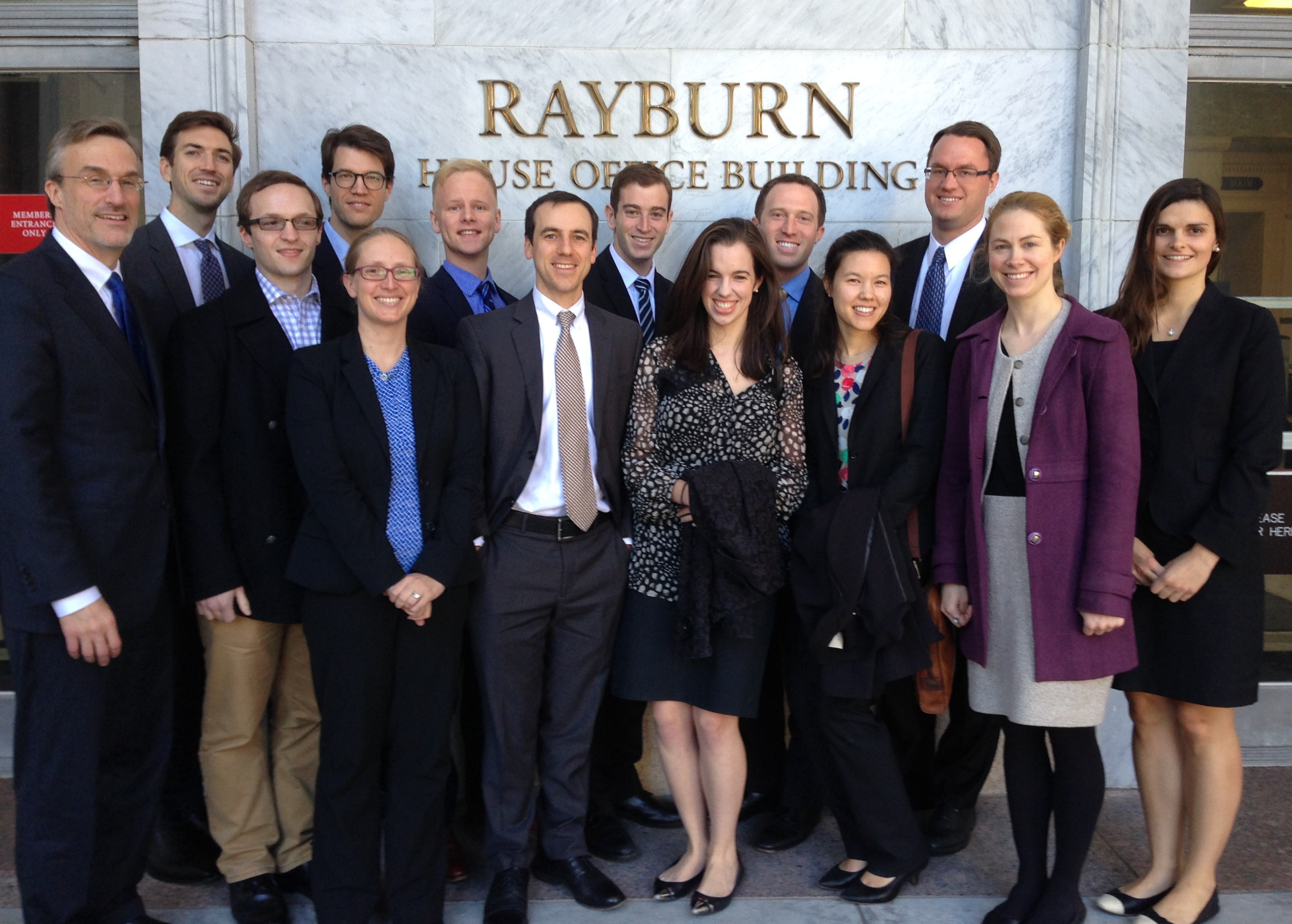
Penn Law students met with experts in Washington to discuss proposals for reforming the regulatory process.
Earlier this academic year, a group of Penn Law students traveled to Washington to take part in a unique opportunity to learn about legislative efforts aimed at improving government regulation.
The day-long series of meetings, part of a new policy research seminar offered by Professor Cary Coglianese entitled Reforming the Administrative State, made clear the extent to which regulatory reform has become a central battleground in an ideological divide between Democrats and Republicans over the role of government in the market economy.
In the morning, the class met with Democratic and Republican staff attorneys working for the House Judiciary Committee—the primary congressional committee responsible for regulatory reform. The meeting provided students a rare opportunity to learn firsthand about key reform legislation currently under consideration in the House of Representatives.
For example, the SCRUB Act would require periodic reviews of rules—called retrospective reviews—to determine whether they should be repealed or eliminated for no longer serving their purpose. It would also require “cut-go” procedures that would force agencies to offset the costs of new rules by cutting old rules.
Supporters of the SCRUB Act argue that regulations accumulate over time, which imposes unintended but significant costs on the economy. Opponents of the bill claim, however, that it would just make it harder for agencies to issue new rules, while opening the door to repealing rules implementing Obamacare or Dodd-Frank. Furthermore, the bill’s opponents worry it would create a costly additional layer of bureaucracy to review regulations.
Another proposal, the Regulatory Accountability Act, would place several reporting requirements on agencies issuing major rules. Specifically, it would require the agency to conduct and disclose to the public cost-benefit analyses for rules to determine the impact on the economy.
House Judiciary Committee Chairman Bob Goodlatte said that the Regulatory Accountability Act would promote “good quality data, sound science, and solid economic analysis” in the rulemaking process. Opponents of the bill believe it would create more red-tape for regulatory agencies, perhaps adding up to three more years to the typical rulemaking process.
An Early Participation in Regulations Act would mandate an additional procedure, called an advance notice of proposed rulemaking (ANPRM), for rules that would have “an annual effect on the economy of $100,000,000 or more.” ANPRMs would allow for greater public input before the agency has become committed to a particular policy solution. Critics of this bill argue that ANPRMs are not necessary in all situations and would further delay rulemaking.
Students saw that Democrats and Republicans could largely agree that periodic retrospective reviews, cost-benefit analysis, and the ANPRMs that are called for in the pending legislation can be useful tools for regulatory agencies. However, they seem to disagree fundamentally over whether these tools should be mandatory.
From the perspective of many Republicans, the currently pending regulatory reform proposals are needed to promote transparency and accountability while reducing unnecessary burdens on the economy. For many Democrats, “regulatory reform” is a code word for smaller government and weaker regulation, making it too burdensome for agencies to pursue needed protections.
Not surprisingly, regulatory reform has become caught up in a six-year fight over the role of government between a Republican-backed House (and now Senate) and the Obama Administration.
Meanwhile, some administrative agencies are pursing regulatory reform on their own. In a meeting held at the Administrative Conference of the United States, Penn Law students had the opportunity to speak with attorneys with experience in agencies such as the Department of Transportation and the Environmental Protection Agency.
From the perspective of some of these attorneys, regulatory reform should preserve government’s flexibility to respond to the needs of their regulated industries. They noted that agencies are already engaging in retrospective review and cost-benefit analysis wherever possible, since it makes for better policy. But these efforts are costly and agencies have limited resources, raising concerns about expanding mandatory requirements for agencies.
At the end of the day, the Penn Law students visited with officials at the White House Office of Information and Regulatory Affairs (OIRA). OIRA is responsible for reviewing significant federal regulations before the agencies issue them, as well as overseeing a process of retrospective regulatory review.
After a full day of visits on Capitol Hill and Pennsylvania Avenue, students left with a better appreciation of the important policy choices implicated by administrative procedures.
For better or worse, debate over regulatory reform is likely to continue for some time to come. By participating in Professor Coglianese’s policy research seminar, offered as part of Penn Law’s Model Government and Public Affairs Initiative, the seminar students came away better prepared to participate in the regulatory process on behalf of future clients, as well as to contribute themselves to future debates over the design of the administrative state.



